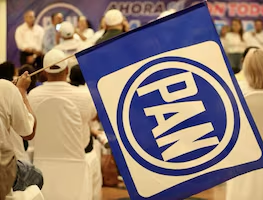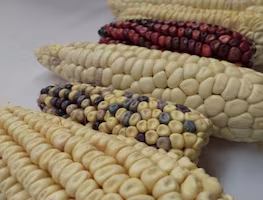Más Información

FGR investiga a "todos los involucrados" en homenaje a "El Mencho" en Coalcomán; indaga posibles vínculos con el CJNG

Alejandro Moreno critica gestión económica del gobierno federal; denuncia "gasolinazos" y advierte aumento al precio de la tortilla

Aseguran armas, drogas y hasta televisores durante operativo en penal de Puerto Vallarta; reubican a 5 reos

Académico de la UNAM alerta sobre generación de ozono por evaporación de gasolinas; pide regular la captura de vapores

"Grave error" dejar a Marko Cortés como líder en el Senado, advierte Adriana Dávila; PAN debe desligarse de liderazgos fallidos, afirma
Next to a wooden table with two bowls and three basins full of rice, beans, peppers, and chicken, Guadalupe Vásquez Felipe was immortalized in the mural of her home located in the Colosio popular neighborhood up north in the Zapotec city.
On the other side of the city, on the front of a home that was damaged by the earthquake of September 7, 2017 , the face of José Sánchez Hernández is depicted wearing a palm hat and a red bandana. It seems as though he monitors pedestrians in the Fourth Section neighborhood, where he was known as “ Che Neya .”
Recommended: Child prodigy portrays Mexican culture
Both images, Guadalupe’s and José’s, are part of a project endorsed by the Urban Art Direction of the city hall, that pretends to paint 100 murals of characters and trades in the fronts of homes and populations that belong to this municipality, such as La Ventosa , La Venta , Chicapa de Castro , and Álvaro Obregón.
Guadalupe
is 53 years old and since 2010, she sells pasties, rice, beans, and chicken. She widowed a decade ago and had to take care of four children. Her image was immortalized as a Zapotec cooker who fights every day.

Che Neya
died in March 2013 . He was a merchant who sold otate, a kind of reed, to build arbors, as well as maize and mezcal. His face was preserved for the memory since last year when the muralists of the Urban Art Direction considered him an important character for the Juchitán society.
Recommended: Mexican muralists to take over New York
For Juchitán, 100 murals
100 murals for Juchitán
, explains the director of Urban Art Jesús Vicente Lagunas , has as an antecedent the work performed since 2011 by the groups Bini Laanu (Our People) and Chiquitraca , comprised by youths who grew up with graffiti and then became muralists .
With the beginning of the current government, led by Emilio Montero Pérez , the Urban Art direction was created and, with four muralists, Luis David , Desiderio , and Jesús , as well as two volunteers, Esmeralda and Didxazá , they have the challenge to pain 100 murals in the triennial period that began last year.

“We have made 45 murals disseminated in all sections, and popular neighborhoods,” says Jesús Vicente Lagunas. The murals portray the characters and trades of the city: men manufacturing huaraches, women embroidering and cooking, as well as children playing with marbles and flying kites.
According to Vicente Lagunas, the remaining murals will be made in Chicapa de Castro , Álvaro Obregón, La Ventosa , and La Venta . “The idea of the murals, in addition to embellish the houses, will always remind us that in Juchitán, there are productive trades and characters that give and have given their best to our society,” he mentions.
Recommended: Murals of "Godfather of Chicano art" to be restored in California
The members of the Urban Art direction , according to its director, were the ones who painted the murals in the recently reconstructed September 5 Market . Fish, shrimp, iguana, maize, totopos, and the embroidered outfits of the women now decorate the walls of the market.

In 2011, the members of the groups Bini Laanu and Chiquitraca began elaborating the murals without the government’s support .
Back then, remembers Vicente Lagunas, known as Gotha , they were able to perform 15 pieces due to the lack of economical resources . Unfortunately, he says, most of these works were lost with the earthquake.
They denounce exclusion
Juchitán muralists, such as David Orozco , known as Poetalatas , question the work scheme of the Urban Art Direction.

“They have hired more people without a muralist career. I have more than 20 years [of career] and I feel excluded . I think that public resources must include everyone,” he says.
Poetalatas
, with over 200 murals in different parts of Mexico, reveals that for now, he is focused on the elaboration of murals in the neighboring Zapotec community of Unión Hidalgo .
Recommended: Mixquiahuala and its outdoor mural gallery
He works in murals with images of seniors who work in trades , such as the palm weavers.

This project, according to David Orozco , will continue with its own resources because the municipal government does not include all artists: “Despite it all, no one will stop our job, although I wished more muralists received support so that their works tell the lives of our characters and trades,” he says.
“We are proud”
With her image now immortalized, Guadalupe Vásquez Felipe does not hide her joy and pride : “Of course I feel happy. My sons are happy and my neighbors were surprised when the artists finished painting myself by the side of the table and the dishes that have been with me for years,” she mentions.
Recommended: 5 Indigenous Mexican painters you should know
mp





